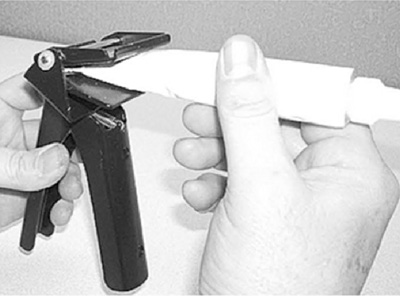Models affected: 2008 and prior GM passenger cars and
trucks (including Saturn); 2003-’08 Hummer H2; 2006-’08 Hummer H3; and
2005-’08 Saab 9-7X with gasoline or diesel engines.
In 2005, General Motors consolidated the use of all liquid
gaskets/engine sealants. At that time, two sealants replaced all
previous sealants referred to in service information and/or the service
manual.
In 2007, GM consolidated to one engine sealant already available in
a 150 g cartridge and now in a 75 g aluminum tube. As a result, P/N
12346141, 54 g tube, has been deleted from service.
One of these, engine sealant P/N 12378521 (U.S.) and P/N 88901148
(Canada), was released in a cartridge to be used in a conventional
caulking gun. The cartridge and conventional caulking gun proved to be
too large and cumbersome in certain instances when used in on-vehicle
service.
To address this concern, GM Powertrain Engineering released the
engine sealant in a 0.075 kg (75 gram) squeeze tube (packaged six to
the carton, with nozzles) along with a new essential service tool,
Sealant Dispenser GE-48326.
Sealant Guidelines
The GM Powertrain engineering
specification for applying this sealant is an even bead, 3 mm (.118?)
in diameter. Due to the high viscosity of the sealant, a dispenser is
required to meet this specification. The GE-48326 Sealant Dispenser
provides the ability to apply the sealant to specification using one
hand, even in areas not accessible, using the P/N 12378521 Engine
Sealant cartridge and caulking gun.
This solitary engine sealant available in tubes and small cartridge
is compatible with all synthetic, synthetic blends and mineral oils, as
well as all engine coolants including DEX-COOL. The maximum working
time of this sealant is 20 minutes. The sealant will be fully cured in
24 hours. The assembly may be filled with oil or coolant immediately
after applying the sealant and tightening the bolts.
The 0.075 kg (75 gram) squeeze tube is not available for 2008 and prior Saturn models (only in 150 g cartridges).
Courtesy of ALLDATA.













